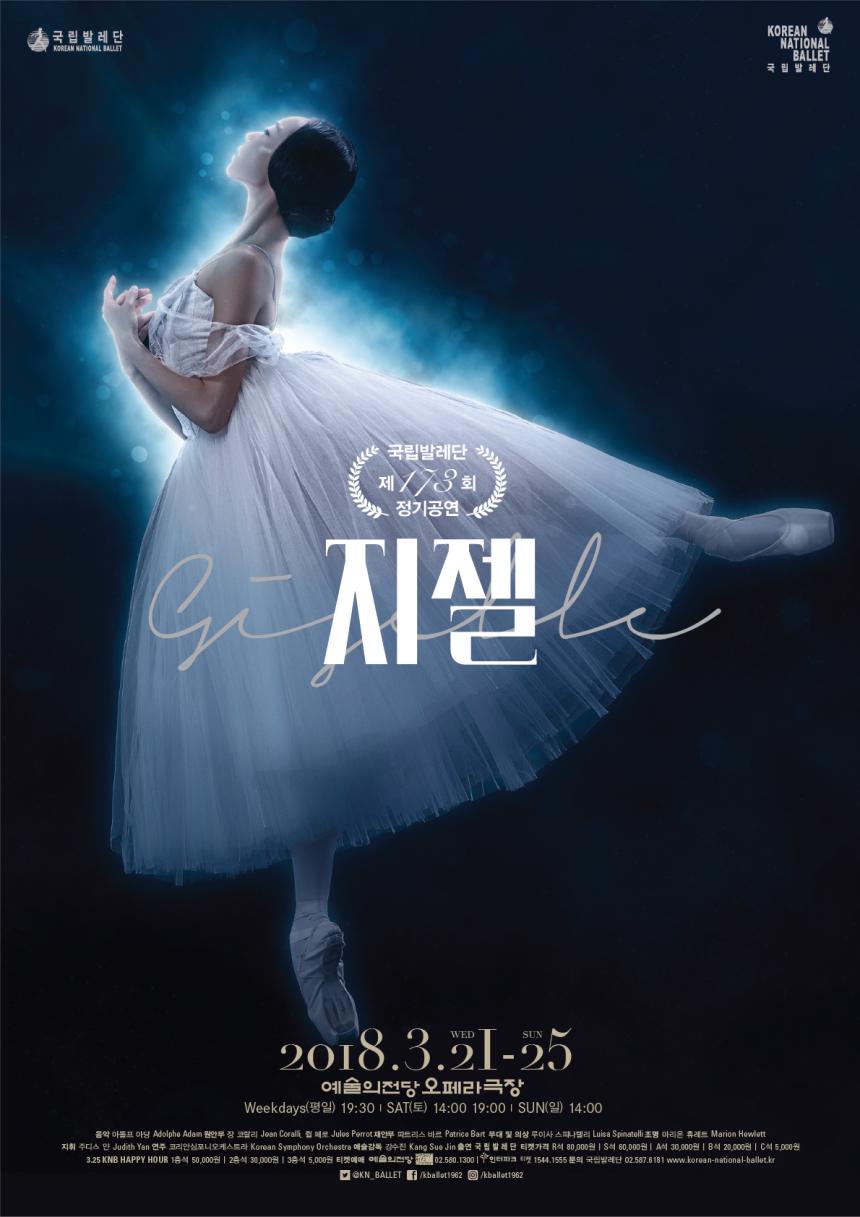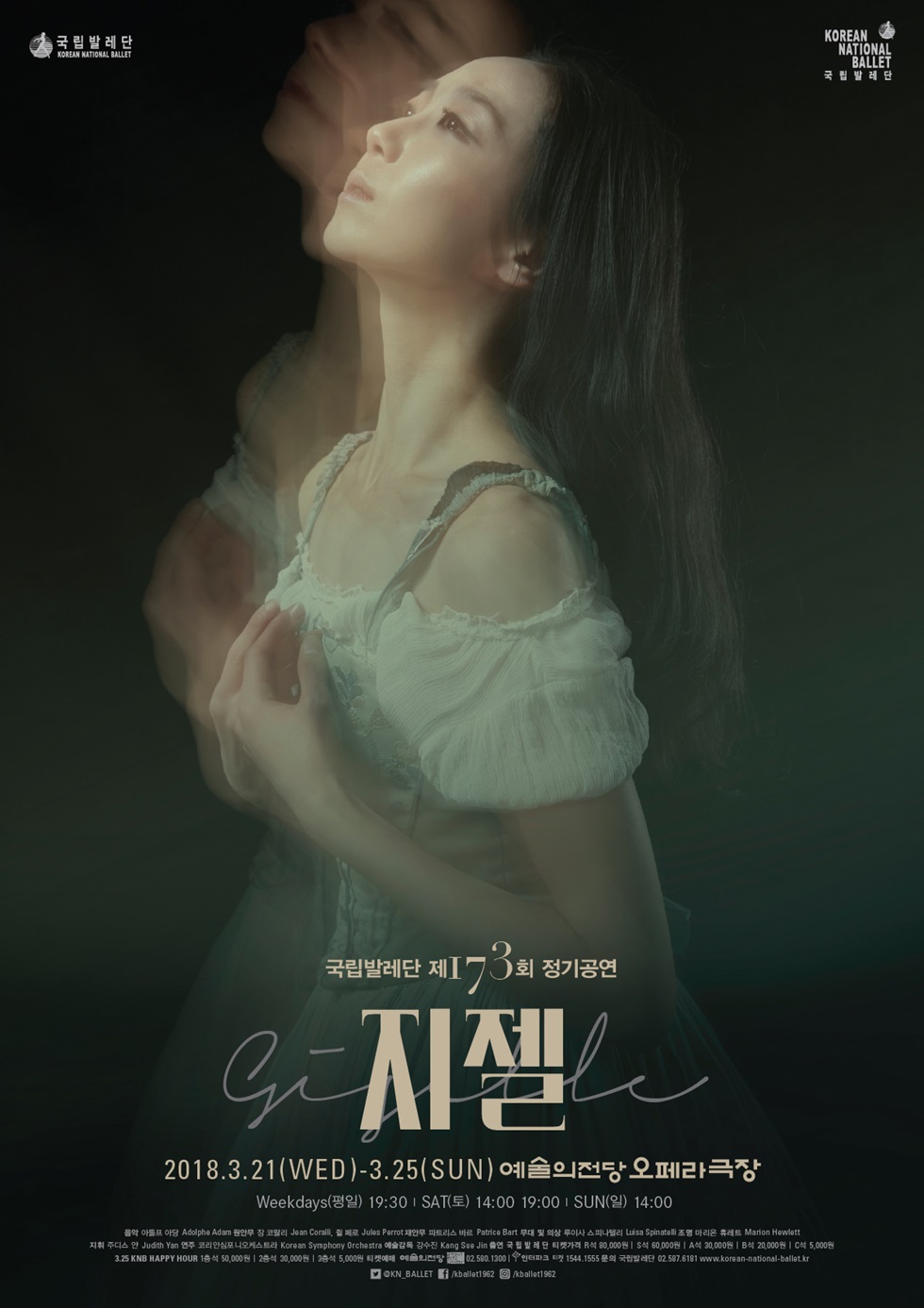
Giselle지젤
|
Music |
Adolphe Adam |
|
Original Choreography |
Jean Coralli, Jules Perrot |
|
Choreography |
Patrice Bart |
|
Staging |
Viviane Descoutures |
|
Set&Costume Design |
Luisa Spinatelli |
|
Lighting |
Marion Hewlett |
|
Conduct |
Judith Yan |
|
Orchestra |
Korean Symphony Orchestra |
|
Artistic Director |
Kang Sue Jin |
지젤Giselle

|
Music |
Adolphe Adam |
|
Original Choreography |
Jean Coralli, Jules Perrot |
|
Choreography |
Patrice Bart |
|
Staging |
Viviane Descoutures |
|
Set&Costume Design |
Luisa Spinatelli |
|
Lighting |
Marion Hewlett |
|
Conduct |
Judith Yan |
|
Orchestra |
Korean Symphony Orchestra |
|
Artistic Director |
Kang Sue Jin |
Act 1
Giselle, a lovely peasant girl with a weak heart and a passion for dancing, is in love with a young man known to her as Loys. He is, in fact, Duke Albrecht disguised as a peasant. Hilarion, the gamekeeper, has also been in love with Giselle, but she rejected him. Hilarion gets suspicious of Loys and he decides to uncover Loys' true identity and separate the two lovers.
A hunting party arrives, led by the Duke of Courtland and his daughter, Bathilde. When Giselle sees Bathilde, they engage in conversation. The noblewoman is charmed by Giselle. The Duke and Bathilde go to Giselle's Cottage for a rest.
The celebration of the harvest is held and everyone dances, including Giselle and Loys. Giselle's mother admonished Giselle for dancing so much, but Giselle and Loys join in a dance. Hilarion presents Albrecht's sword and denounces Loys as a deceiver. Albrecht is not only a nobleman, but he is also engaged to Bathilde. Giselle loses her sanity and dies.
Act 2
Hilarion comes to grieve at her gave and he senses the presence of Wilis. The Wilis, ghosts of young girls who have been dumped and have died before their wedding day, relentlessly avenge men by dancing to death during the hours of darkness.
Giselle is initiated into the Wili's sisterhood by Myrtha, Queen of the Wilis. Albrecht comes to mourn at Giselle's grave and seek her forgiveness. She suddenly appears before him, and he chases in pursuit of her.
Meanwhile, Hilarion has been found in the forest by the wilis. On Myrtha's orders, they make him dance until he is exhausted and cast him into the lake, where he dies. Myrtha commands that Albrecht must die too. Giselle intervenes and protects him. Giselle pleads for his life but Albrecht continues to dance, until he collapses from exhaustion.
The darkness of the forest is over by the first light of dawn. Giselle and Wilis are banished. Giselle saves Albrecht life by the strength of her love and he is left to weep at her grave.
Giselle, the archetypal of the "ballet blanc", saw the light of day on the stage of the Royal Academy of Music on June 28th, 1841. The work marked the apogee of aesthetics which shook up the intellectual and artistic world from the beginning of the 19th century and which had found their first expression in dance ten years earlier in La Sylphide (1832). The ballet was the joint creation of many artists: Théophile Gautier, writer, art critic and chronicler of ballet, Jules-Henri Vernoy de Saint-Georges, the dramatist renowned for his vaudeville, Adolphe Adam, composer of ballet music and opera, the choreographer Jean Coralli, assisted in the wings by Jules Perrot, the set designer Pierre Cicéri, a specialist in fantasy forests and the costume designer Paul Lormier. The production was also brought to life by two exceptional performers: Carlotta Grisi and Lucien Petipa.
The story of Giselle responded perfectly to that era's taste for the fantastic, the bizarre and the strong emotions which characterized post-revolutionary society. The script, inspired by the Germanic legends evoked by the writer Heinrich Heine in his collection From Germany, reflects the Romantic principle of mixing genres: the pastoral theme of Act l ends in tragedy and the nocturnal drama of Act ll concludes with a fantastical dénouement. The conflict between a realistic, terrestrial world, and a dreamlike nether land, peopled with feminine spirits, lends structure to the entire ballet. In it, only the women metamorphose. Mysterious creatures, conveyors of the ideal, the illusion of their immateriality are accentuated by the ethereal tutus, the slow, fluid gestures and the use of points.










